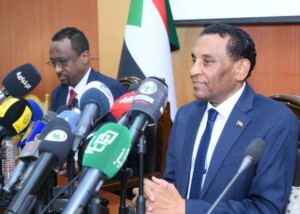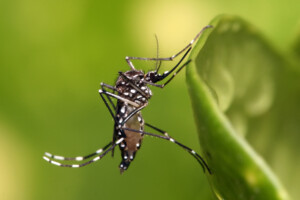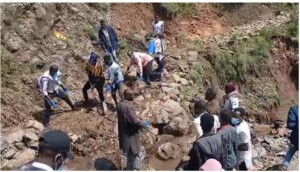No respite from Sudan’s record floods as rivers continue to rise
Continuing rainfall and flooded rivers in Sudan have led to the collapse of houses in Khartoum, Red Sea state, River Nile state, Northern State, El Gezira, Sennar, and Kordofan. Sudan’s Prime Minister Abdallah Hamdok, whose own Khartoum residence has been flooded, visited stricken areas of Sennar yesterday.
 Sudan's Prime Minister Abdallah Hamdok arrives in Sennar state yesterday (Social media)
Sudan's Prime Minister Abdallah Hamdok arrives in Sennar state yesterday (Social media)
Continuing rainfall and flooded rivers in Sudan have led to the collapse of houses in Khartoum, Red Sea state, River Nile state, Northern State, El Gezira, Sennar, and Kordofan. Sudan’s Prime Minister Abdallah Hamdok, whose own Khartoum residence has been flooded, visited stricken areas of Sennar yesterday.
A number of villages and towns have been inundated, forcing people to use boats. Activist Mustafa Ibrahim told Radio Dabanga from Red Sea state that floods engulfed the entire town of Tokar. At least three people drowned.
More than 850 homes, eight government buildings, and 75 shops and stores collapsed. At least 7,415 houses are damaged.
Thousands of people managed to leave the town on time, he said. They sought refuge in Port Sudan, Suakin, and Sinkat.
About 5,000 families are still stranded in Tokar, “while there is not much left to drink or eat”.
The source complained about “an almost total absence” of the government. “They only provided two vehicles with drinking water yesterday.”
He pointed to new floods yesterday, which led to the collapse of emergency dikes built by the public, and demanded the acceleration of the digging of drains “as soon as possible. The cost of renting a machine is SDG15,000* only”.
The Red Sea government has declared Tokar a disaster area and called on Khartoum to provide helicopters to evacuate the affected people.

PM: ‘Sennar worst hit’
Prime Minister Abdallah Hamdok visited Sennar state yesterday. According to the official Sudan News Agency, the PM said that the situation in Sennar “exceeds the losses in all regions of Sudan”.
He declared his full solidarity with those affected by the rains and floods, and offered condolences to the families of people who died. PM Hamdok further pledged Khartoum’s continued support and assistance for the affected.
North Kordofan
At least 11 people died when torrential rains struck Um Rawaba, Sheikan, and Sodari localities in North Kordofan.
According to a report issued by the North Kordofan Commission for Rainy Season Emergencies, 375 houses were destroyed, and 935 and 16 government buildings are damaged.
Khartoum
In Khartoum, the flooding of the White Nile inundated the Gusharat neighbourhood in El Lamab, which led to the collapse of more than 500 houses and part of a school.
As reported by Radio Dabanga yesterday, not even the residence of Sudan’s Prime Minister Abdallah Hamdok was spared.

Historic sites threatened
In northern Sudan, the Nile waters reached the ancient town in Merowe, which contains archaeological sites including a temple to the Egyptian god Amun and the Royal Baths.
The official in charge of the restoration of the Royal Baths site, Omeima Hasabelrasoul said that the damage is not significant, as a shield has been erected to protect the borders of the royal town.
The Minister of Information, Culture, and Tourism, Feisal Mohamed Saleh, visited the site yesterday. He lauded the efforts to protect the site, although a part of the outer wall of the ancient town is submerged.
Disaster zone
Foreign Minister Omar Gamareldin has renewed his appeal to the international community to provide assistance to Sudan after the wave of floods that swept the country and prompted the government to declare Sudan a disaster zone and declare a State of Emergency for three months.
In a briefing of heads and members of diplomatic missions in Khartoum yesterday, Gamareldin said that rains and floods affected more than half a million people and led to the collapse of more than 100,000 homes in 16 of the 18 Sudanese states. More than 100 people died.
The Nile water levels have exceeded the records of the disaster years 1946 and 1988 and are expected to rise even more.
The Foreign Minister welcomed the support provided by Saudi Arabia, the United Arab Emirates (UAE), Kuwait, Egypt, and Turkey to Sudan and expressed his confidence in the response of the international community to help.
‘Medical emergency’
The Sudanese Doctors Committee has warned of the dire health consequences of the floods that hit the country.
In a statement yesterday, the doctors described the declaration of the State of Emergency and invitation of relief organisations as “a courageous but not sufficient decision”.
They call for urgent steps to reduce the expected environmental and health risks due to the floods and not to rely on aid from abroad only.
The expected health risks, “such as watery diarrhoea [often a euphemism for cholera] of all kinds, malaria, bilharzia, injuries caused by snakes, scorpions and insect bites, and direct injuries should be tackled as soon as possible”.
Radio Dabanga’s editorial independence means that we can continue to provide factual updates about political developments to Sudanese and international actors, educate people about how to avoid outbreaks of infectious diseases, and provide a window to the world for those in all corners of Sudan. Support Radio Dabanga for as little as €2.50, the equivalent of a cup of coffee.












 and then
and then